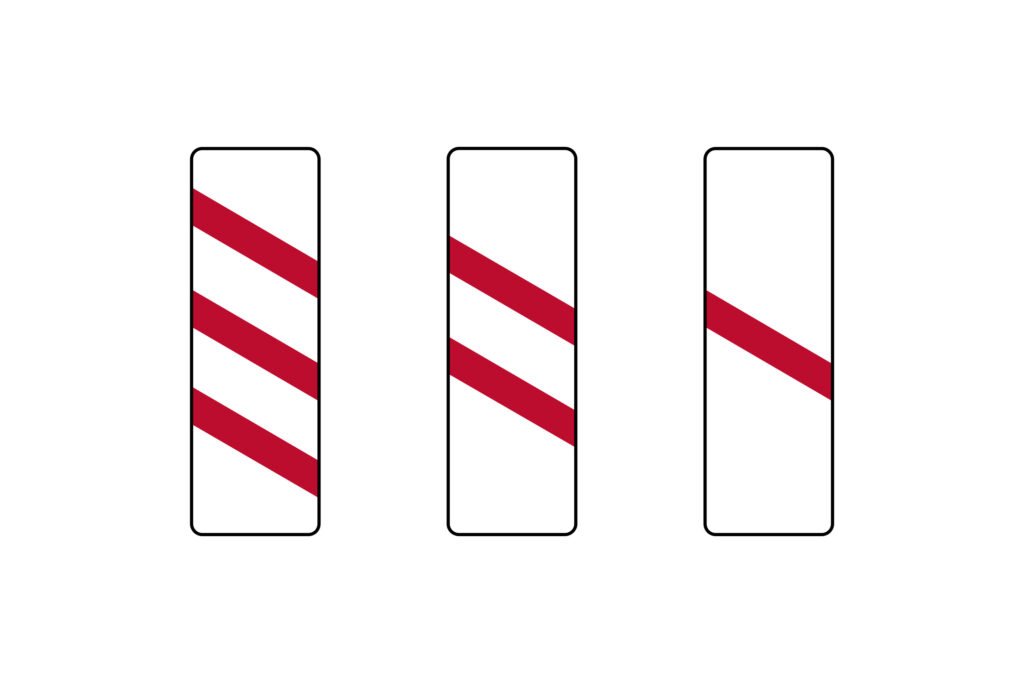Red and White Countdown Markers: What They Really Mean

On UK roads, red and white countdown markers are used to give drivers advance warning of a level crossing — where a road meets a railway line.
These markers are not found on motorways or dual carriageways. They are placed on approaches to crossings to make sure drivers have plenty of notice to slow down and prepare.
Red and White Countdown Markers How They Work
The markers come in a series of three:
- Three bars – about 300 yards from the level crossing.
- Two bars – about 200 yards from the level crossing.
- One bar – about 100 yards from the level crossing.
Each sign is placed closer to the crossing, so drivers know exactly how far away it is.
Red and White Countdown Markers Why They’re Important
Level crossings are high-risk areas. These markers:
- Warn you well in advance that a crossing is coming up.
- Give you time to check your speed and prepare to stop if necessary.
- Act as a visual reminder, especially in rural areas where crossings might appear suddenly.
Red and White Countdown Markers What Drivers Must Do
When you see these markers:
- Ease off the accelerator and be ready to stop.
- Look out for signals – flashing red lights or a lowering barrier mean you must stop.
- Never attempt to cross if the lights are flashing or the barriers are down.
- Do not stop on the tracks – always ensure the exit is clear before moving forward.

Red and White Countdown Markers Key Tip for Learner Drivers
It’s easy to confuse red/white level crossing countdown markers with the blue/white motorway countdown markers.
Here’s the difference:
- Red and white = warning of a level crossing ahead.
- Blue and white = motorway or dual carriageway exit countdown.
Red and White Countdown Markers
Red and white countdown markers are all about safety at level crossings. They give you time to prepare, slow down, and approach with caution. As a learner, the key is to recognise them instantly and know that a railway crossing is not far ahead.
